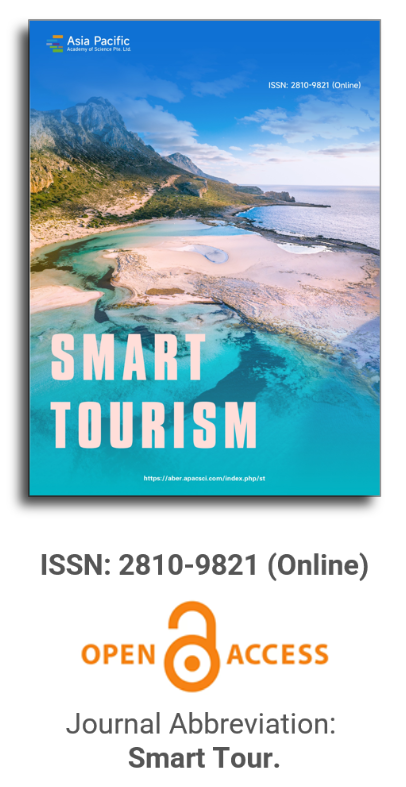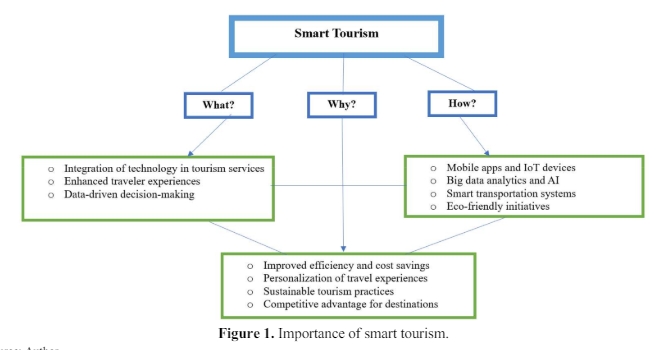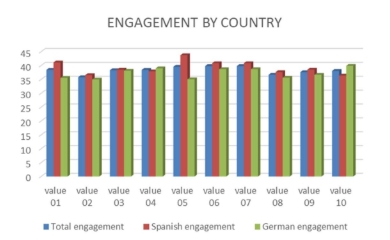


Exploring post-COVID-19 travel intentions of foreign tourists in Nepal: An empirical study using structural equation modeling
Vol 5, Issue 2, 2024
Download PDF
Abstract
Amidst the global challenges posed by the rapid transmission of a new coronavirus, the tourism sector has undergone an unprecedented downturn, similar to all economic sectors. In light of this, the present study aims to examine the travel intentions of foreign tourists in the post-COVID-19 era in the Kathmandu Valley of Nepal using Social Cognitive Theory. Structural equation modeling was used for data analysis of 350 tourists. The study revealed that the travel intention after the COVID-19 outbreak was significantly influenced by severity perception and personal positive effects, both of which were shaped by environmental changes. Results indicate that a common challenge faced by tourists was the lack of quality hotels and homestays, and the suggested managerial solution was to increase the number and enhance the quality of available accommodations. Tourism in Nepal serves as an enduring source of national income, offering a significant competitive advantage, thus rendering sustainable tourism unavoidable.
Keywords
References
- Maliva N, Anderson W, Buchmann A, Dashper K. Risky business? Women’s entrepreneurial responses to crisis in the tourism industry in Tanzania. Journal of Sustainable Tourism. 2024; 32(3): 438-56.
- Nyaupane GP, Poudel S, Timothy DJ. Assessing the Sustainability of Tourism Systems: A Social–Ecological Approach. Tourism Review International. 2018; 22(1): 49–66. doi: 10.3727/154427218x15202734130440
- Sharma K, Sarkar P. A Study on the Impact of Environmental Awareness on the Economic and Socio-Cultural Dimensions of Sustainable Tourism. International Journal of Multidisciplinary Research & Reviews. 2024; 3(01): 84-92.
- Gautam S, Anup KC, Devkota N, et al. Locals’ perception on tourism in Nepal: Evidence from the community support model. International Journal of Tourism Sciences. 2023; 21(1): 10–24.
- Maharjan S, Devkota N, Poudel UR, et al. Newari Community’s Attitude to Promote Cultural Tourism Development: Evidence from Kathmandu Valley, Nepal. Journal of Tourism and Services. 2022; 13(24): 164–189. doi: 10.29036/jots.v13i24.349
- Adetola BO. Biodiversity Conservation and Tourism Sustainability in Africa. In: Sustainable Utilization and Conservation of Africa’s Biological Resources and Environment. Singapore: Springer Nature Singapore. pp. 35-60.
- Baloch QB, Shah SN, Iqbal N, et al. Impact of tourism development upon environmental sustainability: a suggested framework for sustainable ecotourism. Environmental Science and Pollution Research. 2023; 30(3): 5917-30.
- Scott D. Sustainable Tourism and the Grand Challenge of Climate Change. Sustainability. 2021; 13(4): 1966. doi: 10.3390/su13041966
- Devkota N, Gautam S, Parajuli S, et al. Tourism Entrepreneurial Prospects in Bardiya, Nepal: Challenges and Way-forwards. The Gaze: Journal of Tourism and Hospitality. 2022; 13(1): 70–92. doi: 10.3126/gaze.v13i1.42068
- Khan A, Bibi S, Lorenzo A, et al. Tourism and Development in Developing Economies: A Policy Implication Perspective. Sustainability. 2020; 12(4): 1618. doi: 10.3390/su12041618
- Stone LS, Stone MT, Nyaupane G. The State of Tourism and Community Development Research and Future Directions. Tourism Review International. 2021; 25(2): 79–88. doi: 10.3727/154427221x16098837279994
- Eyisi A, Lee D, Trees K. Facilitating collaboration and community participation in tourism development: The case of South-Eastern Nigeria. Tourism and Hospitality Research. 2021; 21(3): 275-88.
- Williams AM, Chen JL, Li G, et al. Risk, uncertainty and ambiguity amid Covid-19: A multi-national analysis of international travel intentions. Annals of Tourism Research. 2022; 92: 103346. doi: 10.1016/j.annals.2021.103346
- Anup KC. Role of Policymakers and Operators Towards Tourism Revival in the Era Of COVID-19 in Nepal. Journal of Tourism Quarterly. 2021; 3(2): 98–112.
- Shrestha S, Rai RK, Bhattarai P, et al. Conservation Finance of Annapurna Conservation Area during COVID-19 Pandemic. Journal of Tourism & Adventure. 2023; 6(1): 89–103. doi: 10.3126/jota.v6i1.58583
- Ogbeide SO, Adediran AK. Covid-19 pandemic, lockdown policy and the economic performance of a developing country. Fuoye Journal of Finance and Contemporary Issues. 2023; 5(1).
- Uğur NG, Akbıyık A. Impacts of COVID-19 on global tourism industry: A cross-regional comparison. Tourism Management Perspectives. 2020; 36: 100744. doi: 10.1016/j.tmp.2020.100744
- Poudel S, Basyal DK, Devkota N, et al. Using social exchange theory to predict residents’ perspective on factors influencing tourism development in Pokhara. Smart Tourism. 2024; 5(1): 2561. doi: 10.54517/st.v5i1.2561
- Gursoy D, Can AS, Williams N, et al. Evolving impacts of COVID-19 vaccination intentions on travel intentions. The Service Industries Journal. 2021; 41(11–12): 719–733. doi: 10.1080/02642069.2021.1938555
- Ekinci Y, Gursoy D, Can AS, et al. Does travel desire influence COVID-19 vaccination intentions? Journal of Hospitality Marketing & Management. 2022; 31(4): 413–430. doi: 10.1080/19368623.2022.2020701
- Haldorai K, Kim WG, Agmapisarn C, et al. Fear of COVID-19 and employee mental health in quarantine hotels: The role of self-compassion and psychological resilience at work. International Journal of Hospitality Management. 2023; 111: 103491. doi: 10.1016/j.ijhm.2023.103491
- Kloutsiniotis PV, Mihail DM, Mylonas N, et al. Transformational Leadership, HRM practices and burnout during the COVID-19 pandemic: The role of personal stress, anxiety, and workplace loneliness. International Journal of Hospitality Management. 2022; 102: 103177. doi: 10.1016/j.ijhm.2022.103177
- Overend D. Mobility: Performative Counter practice for Regular Routes. In: Performance in the Field: Interdisciplinary Practice-as-Research. Cham: Springer International Publishing; 2023. pp. 115–146.
- Prachand VN, Milner R, Angelos P, et al. Medically Necessary, Time-Sensitive Procedures: Scoring System to Ethically and Efficiently Manage Resource Scarcity and Provider Risk During the COVID-19 Pandemic. Journal of the American College of Surgeons. 2020; 231(2): 281–288. doi: 10.1016/j.jamcollsurg.2020.04.011
- Kim J, Yang K, Min J, et al. Hope, fear, and consumer behavioral change amid COVID‐19: Application of protection motivation theory. International Journal of Consumer Studies. 2022; 46(2): 558–574. doi: 10.1111/ijcs.12700
- Kamata H. Tourist destination residents’ attitudes towards tourism during and after the COVID-19 pandemic. Current Issues in Tourism. 2022; 25(1): 134–149. doi: 10.1080/13683500.2021.1881452
- Corbisiero F, Monaco S. Post-pandemic tourism resilience: changes in Italians’ travel behavior and the possible responses of tourist cities. Worldwide Hospitality and Tourism Themes. 2021; 13(3): 401–417. doi: 10.1108/whatt-01-2021-0011
- Chua BL, Al-Ansi A, Lee MJ, et al. Impact of health risk perception on avoidance of international travel in the wake of a pandemic. Current Issues in Tourism. 2021; 24(7): 985–1002. doi: 10.1080/13683500.2020.1829570
- Reisinger Y, Mavondo F. Travel Anxiety and Intentions to Travel Internationally: Implications of Travel Risk Perception. Journal of Travel Research. 2005; 43(3): 212–225. doi: 10.1177/0047287504272017
- Khan N, Hassan AU, Fahad S, Naushad M. Factors affecting tourism industry and its impacts on global economy of the world. SSRN 3559353. 2020.
- Mathema A. The Effect of Covid-19 Pandemic on the Tourism Sector, and its Path towards Recovery: A Case Study of the Homestay Industry of the Kathmandu Valley Asian Institute of Technology. Available online: https://lib.icimod.org/record/36263 (accessed on 6 June 2024).
- Sah R, Sigdel S, Ozaki A, et al. Impact of COVID-19 on tourism in Nepal. Journal of Travel Medicine. 2020; 27(6). doi: 10.1093/jtm/taaa105
- Sharma GD, Thomas A, Paul J. Reviving tourism industry post-COVID-19: A resilience-based framework. Tourism Management Perspectives. 2021; 37: 100786. doi: 10.1016/j.tmp.2020.100786
- Isaac RK, Keijzer J. Leisure travel intention following a period of COVID-19 crisis: A case study of the Dutch market. International Journal of Tourism Cities. 2021; 7(3): 583–601. doi: 10.1108/IJTC-08-2020-0158
- Devkota N, Gajdka K, Siwakoti R, et al. Promoting Sustainable Tourist Behavior through Promotional Marketing. Journal of Tourism and Services. 2023; 14(26): 219–241. doi: 10.29036/jots.v14i26.512
- Seyfi S, Kuhzady S, Rastegar R, et al. Exploring the dynamics of tourist travel intention before and during the COVID-19 pandemic: a scoping review. Tourism Recreation Research. 2024. doi: 10.1080/02508281.2024.2330236
- MCTCA. Nepal Tourism Statistics 2022, Ministry of Culture, Tourism & Civil Aviation. Kathmandu: Government of Nepal; 2023.
- Anup KC, Fernandez M. Tourism and Himalayan indigenous communities. In: Nyaupane GP, Timothy DJ (editors). Tourism and development in the Himalaya social, environmental and economic forces. Routledge; 2022. pp. 149–169.
- Devkota N, Paudel UR, Bhandari U. Does westernization influence the business culture of a touristic city? Economics & Sociology. 2020; 13(4): 154–172. doi: 10.14254/2071-789x.2020/13-4/10
- Devkota N, Poudel UR, Hamarneh I, et al. Rethinking Westernization in Destination: Tourists’ Perception of a Touristic City. Journal of Tourism and Services. 2021; 12(23): 1–25. doi: 10.29036/jots.v12i23.261
- Bandura A. Social cognitive theory of mass communication. Media Psychology. 2001; 3(3): 265–299. https://doi.org/10.1207/S1532 785XM
- Bandura A, Walters RH. Social learning theory. NJ: Prentice hall; 1977. pp. 141–154.
- Li W, Chen G, Wu L, et al. Travel intention during the COVID-19 epidemic: The influence of institutional and interpersonal trust. Frontiers in Psychology. 2022; 13: 1–11. doi: 10.3389/fpsyg.2022.1015900
- Kursan Milaković I. Purchase experience during the COVID-19 pandemic and social cognitive theory: The relevance of consumer vulnerability, resilience, and adaptability for purchase satisfaction and repurchase. International Journal of Consumer Studies. 2021; 45(6): 1425-1442. doi: 10.1111/ijcs.12672
- Teeroovengadum V, Seetanah B, Bindah E, et al. Minimising perceived travel risk in the aftermath of the COVID-19 pandemic to boost travel and tourism. Tourism Review. 2021; 76(4): 910–928. doi: 10.1108/tr-05-2020-0195
- Hao Y, Bai H, Sun S. How does COVID-19 affect tourism in terms of people’s willingness to travel? Empirical evidence from China. Tourism Review. 2021; 76(4): 892-909. doi: 10.1108/tr-09-2020-0424
- Zhu H, Deng F. How to Influence Rural Tourism Intention by Risk Knowledge during COVID-19 Containment in China: Mediating Role of Risk Perception and Attitude. International Journal of Environmental Research and Public Health. 2020; 17(10): 3514. doi: 10.3390/ijerph17103514
- Han S, Yoon A, Kim MJ, et al. What influences tourist behaviors during and after the COVID-19 pandemic? Focusing on theories of risk, coping, and resilience. Journal of Hospitality and Tourism Management. 2022; 50: 355–365. doi: 10.1016/j.jhtm.2022.02.024
- Nicolau JL, Más FJ. The influence of distance and prices on the choice of tourist destinations: The moderating role of motivations. Tourism Management. 2006; 27(5): 982–996. doi: 10.1016/j.tourman.2005.09.009
- Grace MK. The Contributions of Social Stressors and Coping Resources to Psychological Distress Among Those Who Experienced Furlough or Job Loss Due to COVID-19. Work and Occupations. 2023; 50(2): 212–254. doi: 10.1177/07308884221123325
- Tasnim Z, Shareef MA, Dwivedi YK, et al. Tourism sustainability during COVID-19: developing value chain resilience. Operations Management Research. 2022; 16(1): 391–407. doi: 10.1007/s12063-021-00250-8
- Ma G, Ding Y, Ma J. The Impact of Airport Physical Environment on Perceived Safety and Domestic Travel Intention of Chinese Passengers during the COVID-19 Pandemic: The Mediating Role of Passenger Satisfaction. Sustainability. 2022; 14(9): 5628. doi: 10.3390/su14095628
- Albă CD, Popescu LS. Romanian Holiday Vouchers: A Chance to Travel for Low-Income Employees or an Instrument to Boost the Tourism Industry? Sustainability. 2023; 15(2): 1330. doi: 10.3390/su15021330
- Pahrudin P, Chen CT, Liu LW. A modified theory of planned behavioral: A case of tourist intention to visit a destination post pandemic Covid-19 in Indonesia. Heliyon. 2021; 7(10): e08230. doi: 10.1016/j.heliyon.2021.e08230
- Qiao G, Ruan WJ, Pabel A. Understanding tourists’ protection motivations when faced with overseas travel after COVID-19: the case of South Koreans travelling to China. Current Issues in Tourism. 2021; 25(10): 1588–1606. doi: 10.1080/13683500.2021.1928011
- Waters L, Cameron K, Nelson-Coffey SK, et al. Collective wellbeing and posttraumatic growth during COVID-19: how positive psychology can help families, schools, workplaces and marginalized communities. The Journal of Positive Psychology. 2021; 17(6): 761–789. doi: 10.1080/17439760.2021.1940251
- Hossain M. The effect of the Covid-19 on sharing economy activities. Journal of Cleaner Production. 2021; 280: 124782. doi: 10.1016/j.jclepro.2020.124782
- Jeon CY, Yang HW. The Impact of the COVID-19 Pandemic on Tourists’ WTP: Using the Contingent Valuation Method. International Journal of Environmental Research and Public Health. 2021; 18(16): 8605. doi: 10.3390/ijerph18168605
- Kovács AD, Gulyás P, Farkas JZ. Tourism Perspectives in National Parks—A Hungarian Case Study from the Aspects of Rural Development. Sustainability. 2021; 13(21): 12002. doi: 10.3390/su132112002
- Bae SY, Chang PJ. The effect of coronavirus disease-19 (COVID-19) risk perception on behavioural intention towards ‘untact’ tourism in South Korea during the first wave of the pandemic (March 2020). Current Issues in Tourism. 2020; 24(7): 1017-1035. doi: 10.1080/13683500.2020.1798895
- Lamichhane A, K. C. A, Sharma B. Socio-economic Aspects of Tourism Development in Chitlang Village, Makwanpur. Economic Journal of Nepal. 2020; 43(3–4): 74–88. doi: 10.3126/ejon.v43i3-4.48038
- Woldoff RA, Litchfield RC. Digital Nomads: In Search of Freedom, Community, and Meaningful Work in the New Economy. Oxford University Press, USA; 2021.
- Viswanath K, Bekalu M, Dhawan D, et al. Individual and social determinants of COVID-19 vaccine uptake. BMC Public Health. 2021; 21(1). doi: 10.1186/s12889-021-10862-1
- Fenner R, Cernev T. The implications of the Covid-19 pandemic for delivering the Sustainable Development Goals. Futures. 2021; 128: 102726. doi: 10.1016/j.futures.2021.102726
- Fauk NK, Seran AL, Raymond C, et al. Why Do We Not Follow Lifesaving Rules? Factors Affecting Nonadherence to COVID-19 Prevention Guidelines in Indonesia: Healthcare Professionals’ Perspectives. International Journal of Environmental Research and Public Health. 2022; 19(14): 8502. doi: 10.3390/ijerph19148502
- Kendall E, Ehrlich C, Chapman K, et al. Immediate and Long-Term Implications of the COVID-19 Pandemic for People with Disabilities. American Journal of Public Health. 2020; 110(12): 1774–1779. doi: 10.2105/ajph.2020.305890
- Hajibaba H, Gretzel U, Leisch F, et al. Crisis-resistant tourists. Annals of Tourism Research. 2015; 53: 46–60. doi: 10.1016/j.annals.2015.04.001
- Novelli M, Gussing Burgess L, Jones A, et al. ‘No Ebola…still doomed’—The Ebola-induced tourism crisis. Annals of Tourism Research. 2018; 70: 76–87. doi: 10.1016/j.annals.2018.03.006
- Chansuk C, Arreeras T, Chiangboon C, et al. Using factor analyses to understand the post-pandemic travel behavior in domestic tourism through a questionnaire survey. Transportation Research Interdisciplinary Perspectives. 2022; 16: 100691. doi: 10.1016/j.trip.2022.100691
- Daly P, Ninglekhu S, Hollenbach P, et al. Rebuilding historic urban neighborhoods after disasters: Balancing disaster risk reduction and heritage conservation after the 2015 earthquakes in Nepal. International Journal of Disaster Risk Reduction. 2023; 86: 103564. doi: 10.1016/j.ijdrr.2023.103564
- Sengupta U. Geopolitical priorities, governance gaps, and heritage subjectivities: The perils of heritage-making in the post-disaster reconstruction in Nepal. Environment and Planning C: Politics and Space. 2023; 41(3): 523–547. doi: 10.1177/23996544221143660
- Gorsuch RL. Factor Analysis, 2nd ed. Hillsdale, NJ: Lawrence Erlbaum; 1983.
- Hatcher L. A Step-By-Step Approach To Using The SAS® System For Factor Analysis And Structural Equation Modeling. Cary, NC: SAS Institute; 1994.
- Suhr DD. Exploratory or Confirmatory Factor Analysis. Cary, CN: SAS Institute Inc; 2006.
- Kock N, Lynn G. Lateral Collinearity and Misleading Results in Variance-Based SEM: An Illustration and Recommendations. Journal of the Association for Information Systems. 2012; 13(7): 546–580. doi: 10.17705/1jais.00302
- Lawaju P, Awale P, Basyal DK, et al. Investigating Policyholders’ Perception Towards Insurance: Evidence from Structural Equation Modeling. Nepalese Journal of Insurance and Social Security. 2023; 6(1): 71–81. doi: 10.58665/njiss.39
- Purwanto A, Sudargini Y. Partial least squares structural squation modeling (PLS-SEM) analysis for social and management research: a literature review. Journal of Industrial Engineering & Management Research. 2021; 2(4): 114–123.
- Maskey R, Fei J, Nguyen HO. Use of exploratory factor analysis in maritime research. The Asian Journal of Shipping and Logistics. 2018; 34(2): 91–111. doi: 10.1016/j.ajsl.2018.06.006
- Fornell C, Larcker DF. Evaluating Structural Equation Models with Unobservable Variables and Measurement Error. Journal of Marketing Research. 1981; 18(1): 39–50. doi: 10.1177/002224378101800104
- Ab Hamid MR, Sami W, Mohmad Sidek MH. Discriminant Validity Assessment: Use of Fornell & Larcker criterion versus HTMT Criterion. Journal of Physics: Conference Series. 2017; 890: 012163. doi: 10.1088/1742-6596/890/1/012163
- Henseler J, Ringle CM, Sarstedt M. A New Criterion for Assessing Discriminant Validity in Variance-Based Structural Equation Modeling. Journal of the Academy of Marketing Science. 2014; 43(1): 115–135. doi: 10.1007/s11747-014-0403-8
- Hair JF, Ringle CM, Sarstedt M. PLS-SEM: Indeed a Silver Bullet. Journal of Marketing Theory and Practice. 2011; 19(2): 139–152. doi: 10.2753/mtp1069-6679190202
- Streukens S, Leroi-Werelds S. Bootstrapping and PLS-SEM: A step-by-step guide to get more out of your bootstrap results. European Management Journal. 2016; 34(6): 618–632. doi: 10.1016/j.emj.2016.06.003
- Anup KC. Tourism and its Role in Environmental Conservation. Journal of Tourism and Hospitality Education. 2018; 8: 30–47. doi: 10.3126/jthe.v8i0.20009
- Devkota N, Paudel UR, Bhandari U. Tourism entrepreneurs’ expectation from the provincial government in touristic city – Pokhara, Nepal. Journal of Hospitality and Tourism Insights. 2020; 3(3): 329–351. doi: 10.1108/jhti-06-2019-0082
- Saluja V, Anand S, Kumar H, et al. The perceived impact of tourism development and sustainable strategies for residents of Varkala, South India. International Journal of Geoheritage and Parks. 2022; 10(2): 184–195. doi: 10.1016/j.ijgeop.2022.03.003
- Dash SB, Sharma P. Reviving Indian Tourism amid the Covid-19 pandemic: Challenges and workable solutions. Journal of Destination Marketing & Management. 2021; 22: 100648. doi: 10.1016/j.jdmm.2021.100648
- Severo EA, De Guimarães JCF, Wanderley LSO, et al. Influence of the COVID-19 pandemic on the use of social media on awareness’ socio-environmental and sustainable consumption: Consolidating lessons from the pandemic. Environmental Development. 2023; 46: 100865. doi: 10.1016/j.envdev.2023.100865
- Tien NH, Dung NTH, Trang TTT, et al. Factor affecting Tourists’return intention. A case of Binh quoi village in Ho Chi Minh City. PalArch’s Journal of Archaeology of Egypt/Egyptology. 2021; 18(09): 493–507.
- Uddin S, Imam T, Khushi M, et al. How did socio-demographic status and personal attributes influence compliance to COVID-19 preventive behaviours during the early outbreak in Japan? Lessons for pandemic management. Personality and Individual Differences. 2021; 175: 110692. doi: 10.1016/j.paid.2021.110692
- Cahyanto I, Wiblishauser M, Pennington-Gray L, et al. The dynamics of travel avoidance: The case of Ebola in the U.S. Tourism Management Perspectives. 2016; 20: 195–203. doi: 10.1016/j.tmp.2016.09.004
- Neuburger L, Egger R. Travel risk perception and travel behaviour during the COVID-19 pandemic 2020: a case study of the DACH region. Current Issues in Tourism. 2020; 24(7): 1003–1016. doi: 10.1080/13683500.2020.1803807
Supporting Agencies
Copyright (c) 2024 Authors
License URL: https://creativecommons.org/licenses/by/4.0/

This site is licensed under a Creative Commons Attribution 4.0 International License (CC BY 4.0).

Prof. Hung-Che Wu
Nanfang College, Guangzhou
China
Indexing & Archiving
Asia Pacific Academy of Science Pte. Ltd. (APACSCI) specializes in international journal publishing. APACSCI adopts the open access publishing model and provides an important communication bridge for academic groups whose interest fields include engineering, technology, medicine, computer, mathematics, agriculture and forestry, and environment.



.jpg)
.jpg)

.jpg)

